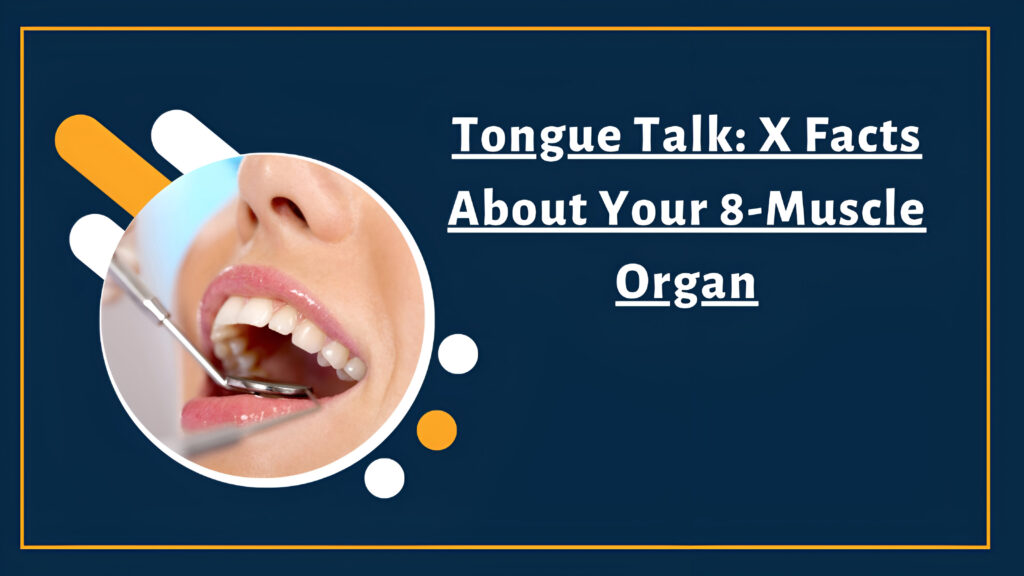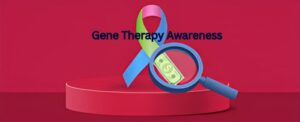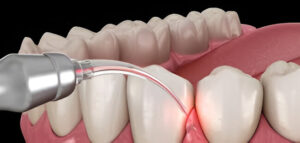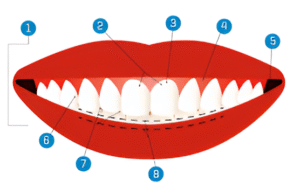Introduction: Start Your Tongue Talk Journey
Let’s face it—the tongue is one of the most underrated organs in the human body. Although it performs countless vital functions every single day, many people don’t truly understand its structure or purpose.
That’s where Tongue Talk comes in. This blog explores fascinating, often-overlooked facts about the tongue that will leave you speechless—in a good way! So, let’s dive right in and discover just how incredible your tongue is.
1. It’s Not Just One Muscle—It’s Eight
To begin our Tongue Talk, let’s clarify a common misconception. While it may feel like a single unit, your tongue is composed of eight interwoven muscles.
-
Four intrinsic muscles control shape and flexibility.
-
Four extrinsic muscles enable movement in various directions.
Consequently, this intricate muscle network allows the tongue to perform complex actions like curling, lifting, and retracting—all with remarkable precision.
2. Your Tongue Print Is Unique
Interestingly, no two tongues are alike. Much like fingerprints, tongue prints have their own unique patterns and textures.
Some researchers are already exploring tongue-based biometric systems. So, beyond helping you speak and taste, your tongue might someday help verify your identity. Pretty futuristic, right?
It’s clear that Tongue Talk isn’t just about biology—it’s about innovation too.
3. Taste Buds Aren’t Just on the Tip
Although many believe that different parts of the tongue detect different tastes, this is a myth. Taste buds are actually spread across the entire tongue.
Here’s what’s more accurate:
-
Each taste bud contains 50–100 receptor cells.
-
Humans can have up to 10,000 taste buds.
-
Taste buds regenerate approximately every 10 days.
With this in mind, Tongue Talk emphasizes that flavor detection is a team effort powered by the whole tongue.
4. Your Tongue Doesn’t Get Tired Easily
Ever wonder why your tongue doesn’t get sore after talking all day? It turns out that its layered muscle structure is the reason.
Because different muscles operate in varying directions, the tongue efficiently distributes strain. Thus, while your legs may tire after a run, your tongue can chat, chew, and sing for hours with ease.
That’s just another reason Tongue Talk urges you to appreciate your mouth’s MVP.
5. Anchored at Only One End
Unlike most muscles, your tongue is anchored only at the back, specifically, to a small bone called the hyoid.
As a result, the front and sides of the tongue are completely free, enabling unparalleled mobility. This is why you can point, flick, roll, and twist your tongue so effortlessly.
So yes, Tongue Talk gives your tongue full marks for flexibility!
6. Tongues Heal Amazingly Fast
Believe it or not, the tongue is one of the fastest-healing parts of your body. Thanks to its rich blood supply and thin epithelial lining, wounds on the tongue close quickly.
Here’s what makes tongue healing so effective:
-
Constant saliva flow contains natural antibacterial agents.
-
Tongue tissue regenerates rapidly.
-
Mouth movements increase circulation and cell turnover.
Therefore, the next time you bite your tongue, take comfort in what Tongue Talk teaches—it’ll heal in no time.
7. Tongue Color Signals Health
Your tongue acts like a mirror for your overall health. A healthy tongue typically appears pink and moist. However, sudden changes in color or texture could indicate underlying health issues.
Pay attention to the following:
-
White patches could point to oral thrush or dehydration.
-
Red, smooth tongues may signal vitamin deficiencies.
-
Dark, hairy coatings often stem from tobacco use or certain medications.
Consequently, Tongue Talk recommends that you take a glance at your tongue during your daily hygiene routine—it might reveal more than you think.
8. Babies Use Their Tongues Differently
Let’s not forget how crucial the tongue is during early development. From the moment they are born, babies rely heavily on their tongues for essential functions such as latching during breastfeeding and forming early sounds.
Over time, their tongue movements adapt to support speech, chewing, and swallowing.
For this reason, Tongue Talk encourages parents to monitor tongue health right from infancy.
9. Digestion Starts With the Tongue
Although your stomach gets most of the credit for digestion, the real magic begins in the mouth. That’s right—your tongue initiates the process.
Specifically, it helps by:
-
Positioning food for chewing
-
Mixing food with saliva
-
Forming a bolus (a soft mass) for swallowing
Tongue Talk reminds us that eating isn’t just a job for your teeth—it’s a team effort led by the tongue.
10. You Can’t Speak Without It
Try saying a few words without moving your tongue. Impossible, right? The tongue plays a major role in creating and shaping nearly all sounds in human speech.
Whether you’re pronouncing consonants or modulating tone, your tongue is working overtime.
That’s why Tongue Talk gives this organ major credit—it makes your voice possible!
Bonus: Fast Facts Worth Knowing
Before we conclude, here are some quick and quirky bits of information to share at your next trivia night:
-
The average adult tongue is about 3 inches long.
-
The strongest tongue muscle is the genioglossus.
-
Contrary to old myths, the tongue is not the strongest muscle overall, but it is incredibly versatile!
As you can see, Tongue Talk goes beyond fun facts. It equips you with real knowledge about this essential organ.
Conclusion: A Final Word from Tongue Talk
Ultimately, the tongue is a remarkable multitasker. It contributes to nutrition, speech, hygiene, and even emotional expression.
For parents, especially, ensuring that a child’s tongue develops properly is critical. To support your child’s oral health, you may want to consult the best paediatric dentist in Dubai, who understands the vital role this organ plays in early development.
As we embrace smarter healthcare and better awareness, let’s not overlook the tongue. Through a modern digital era strategy, both children and adults can learn more about oral anatomy in engaging, interactive ways.
So, whether you’re teaching kids or upgrading your knowledge, let Tongue Talk be your go-to guide. After all, your tongue speaks volumes—even when you’re silent.












